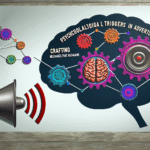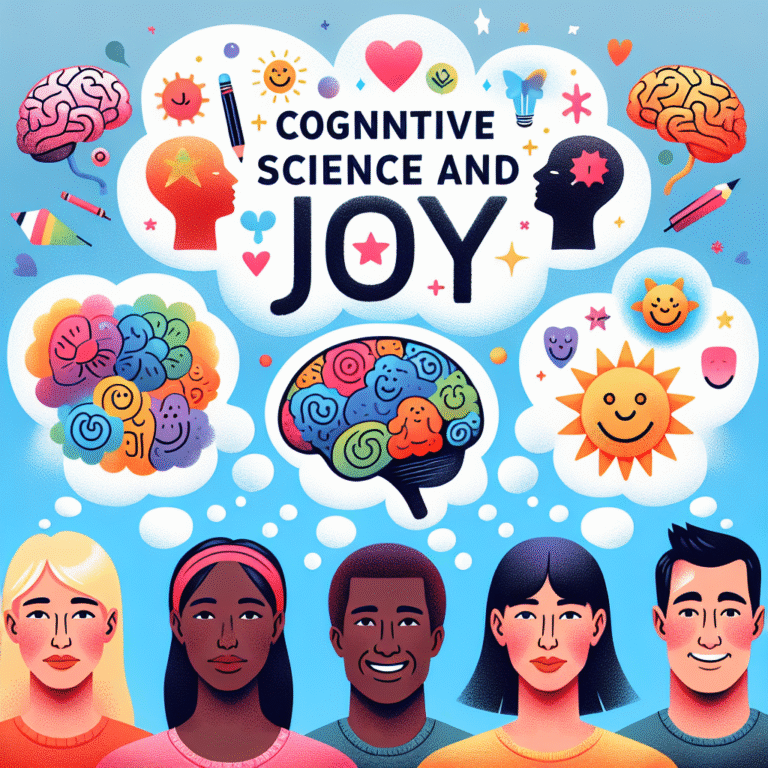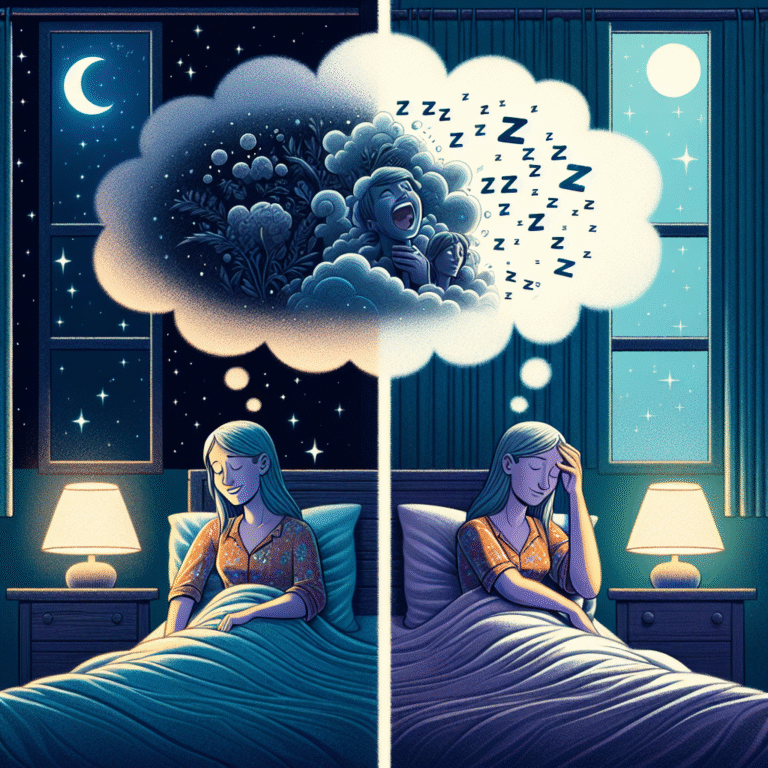
The Sleep Cycle Explained: Navigating the Stages of Restful Slumber for Ultimate Rejuvenation
Introduction
Sleep is one of life’s most vital processes, yet many of us overlook its significance in our quest for optimal health and well-being. The sleep cycle explained: navigating the stages of restful slumber reveals how critical each phase of sleep is for both our physical and mental states. Understanding these stages can empower us to improve the quality of our sleep, ultimately enhancing our productivity, mood, and overall health.
Imagine waking up every morning fully energized, ready to tackle the day ahead. Achieving this dream begins with a thorough understanding of the sleep cycle. In this comprehensive guide, we’ll explore the inner workings of sleep cycles, why they matter, and how to harness their power for better sleep.
The Stages of Sleep: An Overview
Sleep is not a static state; it’s a dynamic process that transitions through various stages. Each stage has its unique characteristics and benefits. The sleep cycle typically comprises four stages: three of non-REM (NREM) sleep and one of REM sleep. It takes about 90 minutes to complete a full cycle, and this process repeats several times throughout the night.
Stage 1: NREM Sleep (Light Sleep)
- Duration: 5-10 minutes
- Characteristics: This initial stage marks the transition from wakefulness to sleep. Heart rate slows, and muscles relax, preparing the body for deeper sleep.
Stage 2: NREM Sleep (Moderate Sleep)
- Duration: 20 minutes
- Characteristics: Body temperature drops, and eye movement stops. Brain waves slow down, with the onset of sleep spindles, which are short bursts of brain activity.
Stage 3: NREM Sleep (Deep Sleep)
- Duration: 20-40 minutes
- Characteristics: This stage is crucial for physical recovery and growth. It’s when the body repairs itself, builds bone and muscle, and strengthens the immune system. Awakening from deep sleep can often lead to feelings of disorientation.
- Stage 4: REM Sleep (Dream Sleep)
- Duration: 10-20 minutes
- Characteristics: This stage is characterized by rapid eye movement and increased brain activity. Most dreams occur during this phase, which is vital for memory consolidation and emotional regulation.
Illustrating the Sleep Cycle
To visualize the sleep cycle, consider the following chart:
| Sleep Stage | Duration | Key Features |
|---|---|---|
| NREM Stage 1 | 5-10 minutes | Transition state, light sleep, muscle relaxation |
| NREM Stage 2 | 20 minutes | Decreased heart rate, reduced body temperature |
| NREM Stage 3 | 20-40 minutes | Deep sleep, physical recovery, immune system strengthening |
| REM Stage | 10-20 minutes | Dreaming, memory consolidation, emotional health |
Understanding the sleep cycle explained: navigating the stages of restful slumber is essential in appreciating how these stages interconnect to contribute to deeper rest and recovery.
The Science Behind Sleep Cycles
The sleep cycle is regulated by our internal body clock, the circadian rhythm, which operates on a roughly 24-hour cycle. Factors like light exposure, lifestyle, and health conditions can significantly impact the balance and quality of sleep cycles.
Circadian Rhythm and Sleep Regulation
Circadian rhythms synchronize our sleep-wake cycles with environmental cues such as light and temperature. Here’s how it works:
- Light Exposure: Natural light helps to signal when to be awake or asleep by regulating cortisol and melatonin levels, hormones that manage alertness and sleepiness.
- Lifestyle Factors: Regular sleep schedules and healthy practices, such as limited caffeine intake and regular exercise, can enhance sleep quality.
Case Study 1: Sleep and Academic Performance
In a study examining college students, those who maintained a consistent sleep schedule performed better academically than their counterparts who experienced erratic sleep patterns. The students with regular sleep cycles showed improved concentration, memory, and overall cognitive performance—concrete evidence that supports the sleep cycle explained: navigating the stages of restful slumber to boost academic success.
Analysis
This case emphasizes the critical role of a stable sleep schedule in optimizing brain function and academic performance. Consequently, students should prioritize healthy sleep habits to enhance their educational outcomes.
Common Sleep Disorders and Their Impact
Understanding the sleep cycle explained: navigating the stages of restful slumber also involves recognizing how certain disorders can disrupt normal sleep patterns. Conditions such as insomnia, sleep apnea, and restless leg syndrome can significantly hinder restful sleep.
- Insomnia: Characterized by difficulty falling or staying asleep, insomnia can lead to exhaustion during the day.
- Sleep Apnea: A serious condition where breathing interrupts during sleep. This impacts deep sleep quality and can lead to fatigue.
- Restless Leg Syndrome: This condition creates an uncontrollable urge to move the legs, disrupting the sleep cycle and preventing restful slumber.
Case Study 2: Insomnia Management
In a clinical trial studying cognitive-behavioral therapy (CBT) for insomnia sufferers, many participants reported significant improvements in sleep quality after just a few weeks. They experienced longer sleep duration and fewer nighttime awakenings—important outcomes illustrating the need for addressing sleep disorders to navigate the stages of restful slumber successfully.
Analysis
The results suggest that cognitive-behavioral approaches can effectively address insomnia, reinforcing the notion that disrupting the sleep cycle can have serious implications for overall health.
Lifestyle Changes for Enhanced Sleep Quality
Introducing specific lifestyle changes can positively influence your sleep cycles. Here are several recommendations to help improve your sleep quality:
- Establish a Sleep Schedule: Go to bed and wake up at the same time each day, even on weekends.
- Create a Relaxing Sleep Environment: Ensure your bedroom is dark, cool, and quiet to promote awareness of the sleep cycle.
- Limit Stimulants Before Bed: Avoid caffeine, nicotine, and heavy meals in the hours leading up to bedtime.
- Incorporate Relaxation Techniques: Activities such as yoga, reading, or deep-breathing exercises can help prepare the mind and body for sleep.
- Reduce Screen Time: Limit electronic devices at least 30 minutes before bed to minimize exposure to blue light, which can interfere with melatonin production.
Case Study 3: The Role of Relaxation Techniques
A group of corporate employees was studied over three months to observe the impact of relaxation techniques on their sleep quality. Researchers found that regular practice of mindfulness meditation led to improved sleep time and reduced sleep disturbances, further supporting the sleep cycle explained: navigating the stages of restful slumber by demonstrating how mental health can directly affect sleep quality.
Analysis
This case study underlines that adopting mindfulness and relaxation practices can be powerful tools for enhancing sleep quality. Companies may consider integrating wellness initiatives to help employees manage stress and sleep better.
The Psychological Impact of Quality Sleep
Though much attention is given to the physical effects of sleep, the psychological benefits are equally important. Numerous studies link quality sleep with improved mental health outcomes.
Sleep and Emotional Regulation
Better sleep quality facilitates emotional resilience. For instance, studies show that people who sleep poorly often struggle with anxiety and depression. By fostering better sleep cycles, we can cultivate improved mental health and emotional stability.
Case Study 4: Sleep and Mental Health
Research conducted by Harvard Medical School revealed that participants who reported better sleep quality also demonstrated enhanced emotional regulation. They coped more effectively with stressors and exhibited better mood stability, indicative of how essential the sleep cycle is for mental well-being.
Analysis
This case emphasizes the importance of addressing sleep quality as part of a broader mental health strategy. The cycles of sleep directly contribute to our ability to process emotions and manage stress.
Conclusion
Understanding the sleep cycle explained: navigating the stages of restful slumber offers invaluable insights into how we can enhance our sleep quality. Each stage of sleep serves a purpose in restoring our bodies and minds, facilitating physical recovery, emotional processing, and cognitive function.
By adopting healthy sleep habits and addressing potential disruptions, we can reclaim restorative sleep, leading to better health, productivity, and quality of life. The journey towards optimal sleep starts with understanding our body’s natural rhythms and making conscious choices to support them.
FAQs
Q1: How long does a complete sleep cycle last?
A: A complete sleep cycle lasts approximately 90 minutes and consists of various stages, including deep and REM sleep.
Q2: How many sleep cycles do we go through in a night?
A: Most people experience 4-6 sleep cycles per night, depending on their total sleep duration.
Q3: What can I do if I wake up often during the night?
A: Consider establishing a consistent sleep schedule, creating a sleep-friendly environment, and avoiding screen time before bed.
Q4: Can napping affect my sleep cycle?
A: Napping can be beneficial if done correctly; however, long or irregular naps may disrupt your sleep cycle, making it harder to sleep at night.
Q5: What role do dreams play in our sleep cycle?
A: Dreams predominantly occur during REM sleep and are believed to help process emotions, consolidate memories, and enhance creativity.
By embracing the insights and practices shared here, you can navigate the intricate stages of restful slumber, ultimately leading to a life filled with vibrancy, health, and well-being.














